Next-generation Biofuels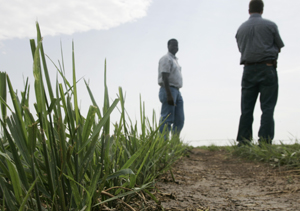
Developing next-generation biofuels will require the skills of a variety of workers throughout the chain of production, from chemical engineers and technicians to agricultural workers, industrial truck drivers, and agricultural inspectors. (AP Photo)
Mass Transit and Rail
New York City is scheduled to have 1700 hybrid-electric buses on its roads by 2010. As gas prices rise and demand for mass transit increases, so will the demand for new bus drivers, civil engineers, rail track layers, locomotive engineers, rail conductors, welders, and dispatchers trained in the new technology of mass transit and freight rail. (AP Photo/David Karp)
Building Retrofits for Efficiency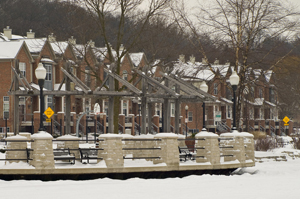
Building retrofits for energy efficiency will be a big component of the green economy. Weatherizing buildings with new windows and insulation, adjusting HVAC controls, even replacing old thermostats with programmable ones—are all steps that will reduce household energy expenditures, and create good jobs for carpenters, roofers, heating and air conditioning specialists, and building inspectors who are trained in energy efficiency techniques. (Flickr/Thomas Merton)
Smart Grid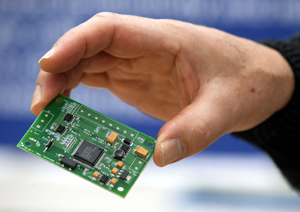
Don Hammerstrom, an engineer at Pacific Northwest National Laboratory in Richland, Wash., holds up a circuit board that was developed at the lab. These circuit boards could be an integral part of building a smart grid; the circuit board is designed to prevent power grid outages by enabling home appliances to temporarily shut down some of their functions when a power shortage is detected on the grid. (AP Photo/Jackie Johnston)
Green Roofs
Edmund Snodgrass, seen here in front of the demonstration garden on the roof of the American Society of Landscape Architects building in Washington, DC, is an expert on choosing and growing green roof plants. The proliferation of green roofs, as well as trends toward native and water-sensitive landscaping, is already creating a new niche for landscape architects in the green economy. (AP Photo/Dean Fosdick)
Solar Richmond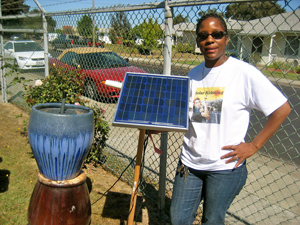
Solar Richmond’s Program Manager, Angela Greene at a solar fountain workshop. The program provides low-cost and free solar system installation to low-income homeowners while training low-income residents from the community to do the work. (Flickr/greenjobsnow)
Sustainable South Bronx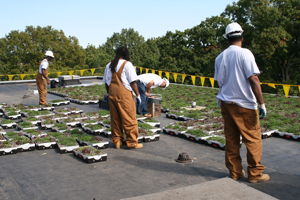
Sustainable South Bronx is another local program that moves Bronx residents who are on welfare into living wage, green-collar jobs while also greening the community itself through green roofs, solid waste reduction and disposal, and urban forestry. (Flickr/greenjobsnow)
Electric Cars
Tesla Motors employees assemble a “Roadster” in the company’s Menlo Park, CA showroom. The electric carmaker employs engineers, sales people, designers, and administrative staff to run the business. (AP Photo/Paul Sakuma)
Wind Power
The construction and operation of wind farms will employ workers of all skill levels, from construction workers and operators and truck drivers to sheet metal workers, machinists, environmental engineers, and industrial production managers. (AP Photo/Jackie Johnston)